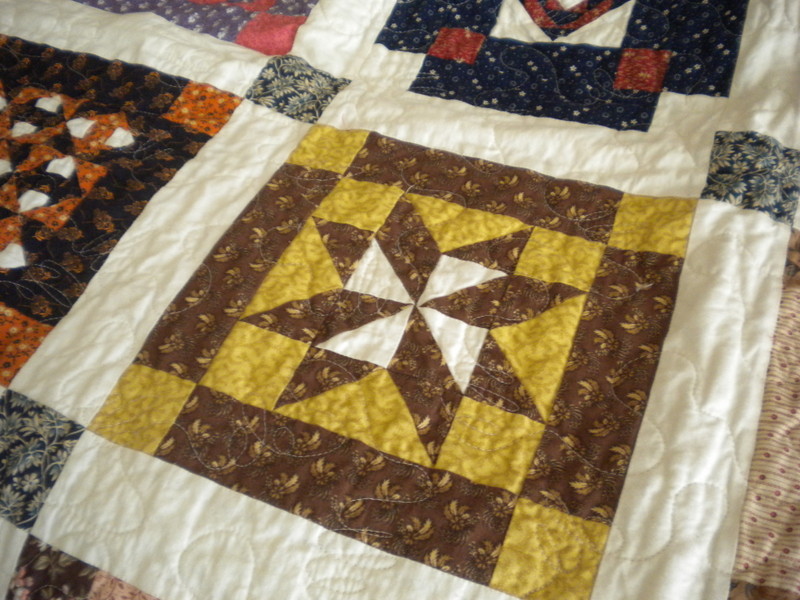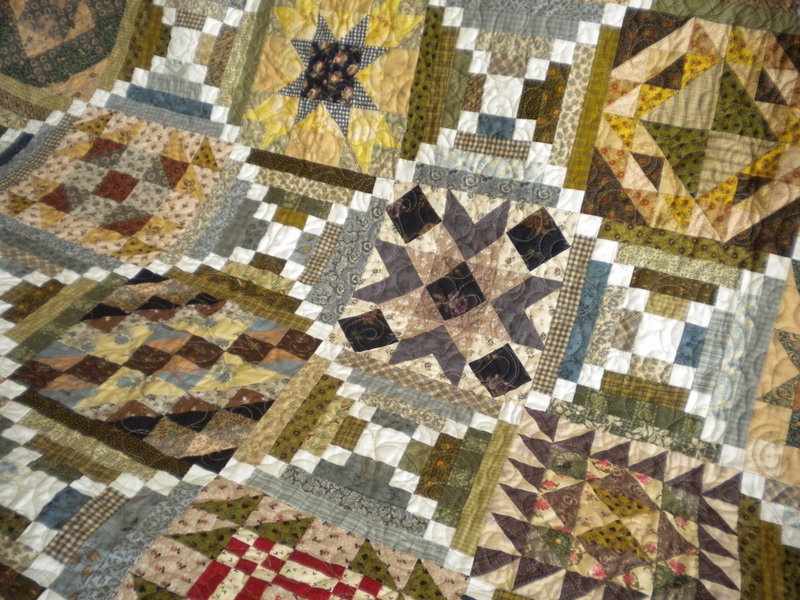The famous use of quilts as special signs for those traveling the Underground Railroad has been the focus of non-fiction and fiction books and stories for readers of all ages. Undoubtedly, the role of quilting during the Civil War was an important one, even if the use of quilts for the Railroad is debated. Below we explore quilting in the era of the Underground Railroad and the Civil War.

Quilters today can create beautiful Civil War styled quilts using the wide variety of reproduction fabrics available; photo via A Quilting Life
Stories of quilts in the Underground Railroad
In the children’s book Sweet Clara and the Freedom Quilt by Deborah Hopkinson, a young slave girl learns to sew and quilt so she can help create a fabric map in a quilt that leads to freedom. The stitched “freedom quilt” enables Clara and others to travel north to Canada and a new, free life.
It seems logical that a common household item like a quilt could, indeed, have been used to provide information to those traveling in secrecy. It was a common thing in the days of the Underground Railroad for a great amount of time to be spent sewing quilts by the women of the household. Since quilts needed to be washed and hung out to dry, there was also much opportunity to use this common household item as a symbol or sign that could convey information without drawing undue attention to a household.
Maps & symbols
While there are many stories and legends of quilts being used as maps and symbols to help slaves find their way along the Underground Railroad to eventual freedom, the most well-known and thorough treatment of this topic can be found in the book Hidden in Plain View: A Secret Story of Quilts and the Underground Railroad, by historian Jacqueline L. Tobin and scholar Raymond G. Dobard.
Jacqueline Tobin wrote this book after meeting African-American quilter Ozella McDaniel Williams, who wanted to share her family’s story. According to Williams, the story of a quilt code used to help slaves along the Underground Railroad had been passed down from generation to generation in her family. Over several years the two women developed a unique friendship, and Williams is able to trust Tobin enough to tell her story. Tobin recruits Raymond Dobard, art history professor, and African-American quilter, to help piece together the parts of this incredible tale.

Star blocks, often representing the North Star were a part of the slave code, according to Ozella McDaniel Williams
The code of quilting
According to Williams, there existed a secret code of color and symbols among slaves with origins in the African ancestry and history. The code was often presented utilizing common everyday quilt block patterns that held significant messages for those traveling the Underground Railroad. Sometimes the messages signaled things slaves needed to do to get ready for their journey, and at other times the symbols sent messages about when to leave, where to go, and whether or not a house was a safe place to stop.
Quilt blocks specifically mentioned by Williams include the Monkey Wrench, Carpenter’s Wheel, Bear’s Paw, Cross Roads, Log Cabin, Shoo Fly, Bow Tie, Flying Geese, Drunkard’s Path, Star and Tumbling Blocks.

Flying Geese blocks were a significant part of the slave code presented in “Hidden in Plain View.”
True? Or not?
While the stories of such magical quilt and romantic travels are appealing to quilters, it is hard to find any hard evidence that these stories are true. In fact, many well-respected quilt historians and scholars have taken issue with the supposed slave “code” discussed by Williams and presented in Hidden in Plain View. There are articles and essays written from many different points of view on the topic without a general consensus as to the accuracy of the Williams story. Whether or not the quilts of this era were actually used as secret maps and symbols may be something modern historians will never be able to document; nonetheless, it is an interesting thing to think about.

Beautiful Civil War reproduction fabrics are easily available for today’s quilters to create their own versions of Civil War and Underground Railroad era quilts.
Quilting in the Civil War era
While the use of quilts of the Underground Railroad may be in question, it is clearly understood that quilts were indeed an important part of Civil War era life. Quilts were a necessity in pioneer life, and the women at home during the war made quilts for their homes and to send to soldiers out in the field.
Today, modern quilters are able to remake Civil War era blocks using the highest quality Civil War reproduction fabrics. Blues, browns, greens, tans, grays and pinks were commonly used in Civil War era quilts, and quilters today are drawn to creating beautiful quilts using the same color combinations.

Pinwheels in popular Civil War and Underground Railroad era colors
Recommended reading:
- Barbara Brackman, a noted quilt historian, recently published Civil War Sampler: 50 Quilt Blocks with Stories from History, which contains both Civil War era and new quilt blocks created in reproduction fabrics and tied to stories from the time.
- Rosemary Youngs’s The Civil War Love Letter Quilt: 121 Quilt Blocks Inspired by Love and War also blends a variety of block patterns old and new with actual Civil War era letters.
- Quilts of the Underground Railroad and Civil War era are also found in novels by popular quilt writers such as Jennifer Chiaverini’s The Runaway Quilt and Alice’s Tulips by Sandra Dallas.
[box type=”shadow”]Get a comprehensive look into the role of quilting during the Civil War, including unique, heritage designs, and create your own beautiful Civil War blocks in the class Re-Piecing the Past: Civil War Blocks Then and Now.[/box]

Share tips, start a discussion or ask one of our experts or other students a question.
No Responses to “Quilts of the Underground Railroad: Fact or Fiction?”